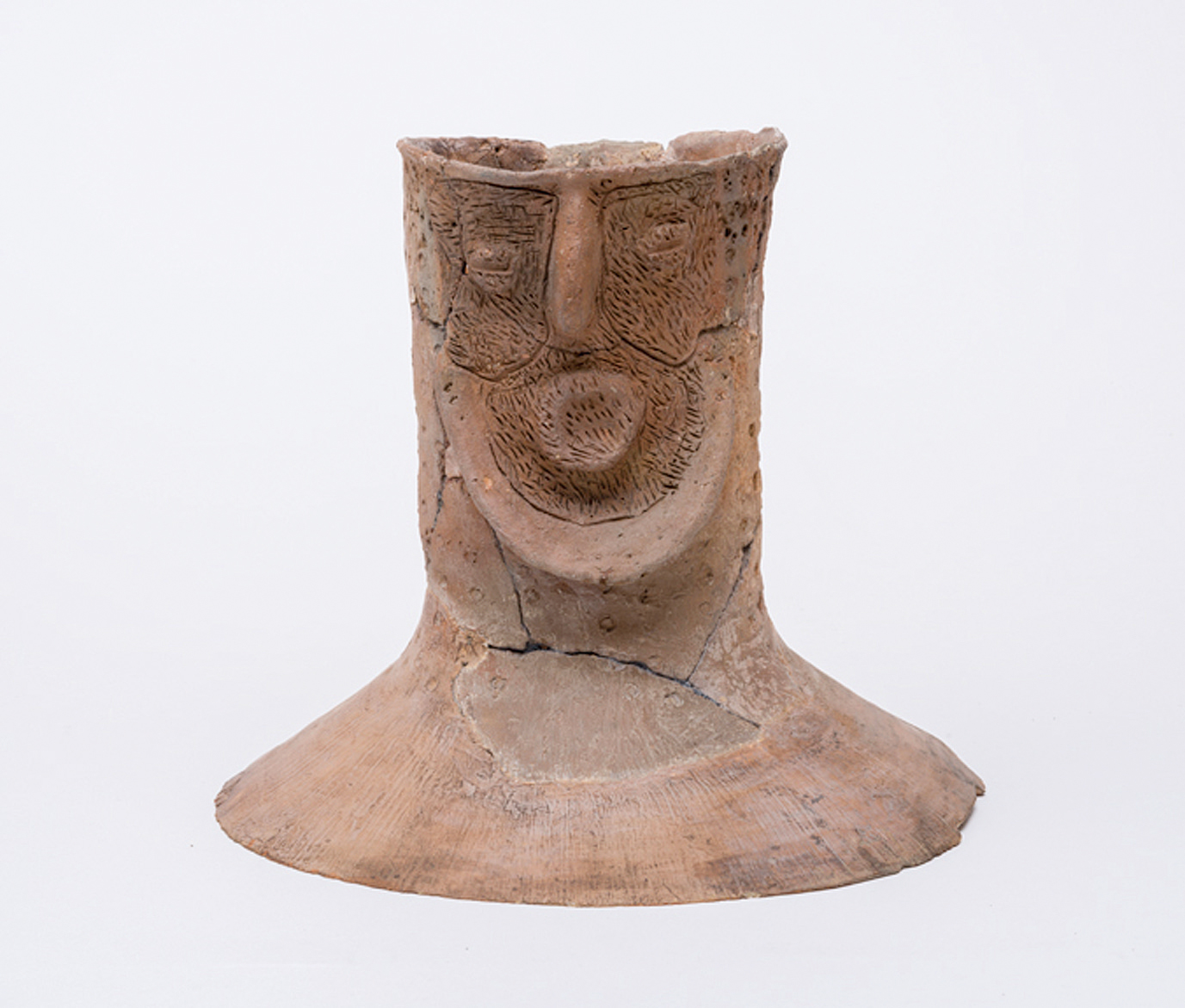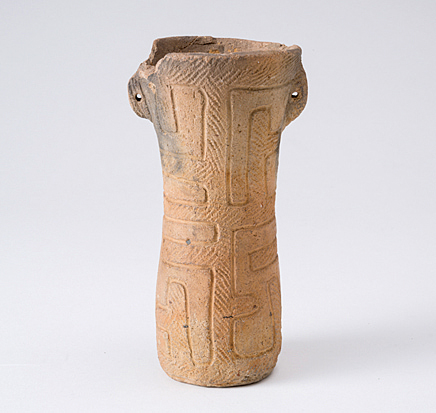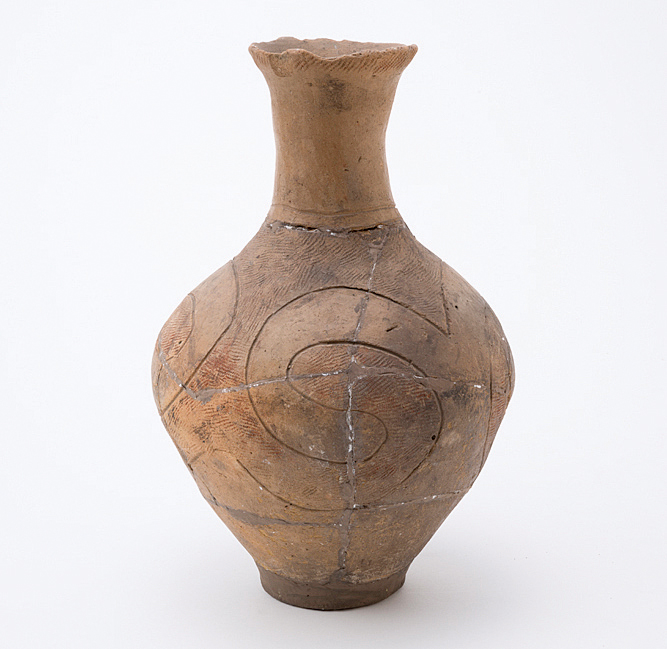F2
Yayoi pottery of the Kanto Region
In 1884, a jar was discovered in the Mukogaoka shell midden (Mukogaoka-Yayoi, Hongo-ku, Tokyo prefecture). The thin wall of this jar was considered to be similar to the “Omori type” (Late Jomon period), but its form and reddish surface color suggest that they correspond to a different type. It was named Yayoi pottery after its origin. On the other hand, Yayoi pottery of eastern Japan has a cord-mark pattern, a strong influence from the Jomon culture, which is absent in western Japan. Archaeologists who paid much attention to Han culture’s strong impact on Yayoi culture, such as bronze implements, tended to disregard traces of Jomon culture. Yamauchi however, did not overlook traces of Jomon culture as one of the components of Yayoi culture. Potteries of the first half of the Yayoi period in the Kanto region retain features of Late and Final Jomon potteries.
All the pieces in the exhibition were unearthed from the Nozawa site (Tochigi prefecture) of the Kanto region and belong to the Middle Yayoi period, namely, the first half of the Yayoi period. They share similarities with Jomon pottery, such as a geometrical design realized by erased-over code impressions and a cylindrical form. At the same time, they present significant differences from vessels regulated within functional form categories with simple appearances for practical usefulness, which were regarded as more important in western Japan. One outstanding feature of potteries from the first half of the Yayoi period of the Kanto region is the jars with a human face ornament, which show a continuation of clay figurines of Jomon culture. The one exhibited here is said to have been excavated from a grave of a secondary burial, which was a characteristic funeral practice in the southern Tohoku region. It suggests that the southern Tohoku region strongly influenced the Kanto region. (Hiromi Shitara)



